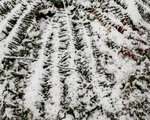



As the weather becomes unpredictable, being prepared for all possibilities while hitting the trails is a key to not only enjoyment but survival.
Paying close attention to weather conditions is the first step of being prepared for the winter weather. This is important as forecasts change by the hour with the Pacific Northwest’s unpredictable weather.
The Washington Trails Association (WTA) strongly encourages hikers to check the roads and check the weather prior to venturing out. The WTA recommends people to call ahead to the ranger station where they plan to hike or snowshoe to determine current conditions, especially the local roads where storms or fallen trees can shut off routes unexpectedly.
The essentials
The WTA encourages people pack what it calls the 10 essentials: a topographic map and compass, hydration, extra food, extra clothing, a fire starter, a first-aid kit, a pocket knife, a flashlight, sun protection and an emergency shelter.
Adding to that, I recommend anyone packing for a winter adventure include an emergency blanket. For example, the SOL Emergency Blanket can be found online at Cabela’s, REI, Amazon and other stores. Emergency blankets prevent body heat loss and in turn hold in that heat, which is the perfect tool to have on hand to prevent hypothermia.
Proper attire
What is there to consider when choosing the newest pair of hiking boots?
I would always take into consideration options that are insulated. Insulated boots provide warm feet, even in the snow, and most always have waterproof capabilities, ankle support and traction. Ice traction cleats are great accessories to pack if you are not packing snow shoes. Ice traction cleats options meet anyone’s budget — ranging from $15 to $75 — can be found online.
The WTA also encourages adequate extra clothing for winter exploration.
“Bring plenty of layers made of materials such as wool or polypropylene that wick sweat and moisture away from your body,” the WTA states.
One of my favorite winter clothing items happens to be from the giant Portland-area company Columbia Sportswear: The Columbia Sportswear Marquam Peak Fusion™ Insulated Parka, which provides warmth, comfort, plenty of pockets and repels rain and snow nicely. For women, the Columbia Sportswear Payton Pass™ Interchange Jacket does the same and is most suitable for hiking, compared to longer length fashion parkas.
Other items the WTA recommends packing:
• A headlamp or flashlight (and extra batteries) because days are short and night comes quickly.
• Plenty of extra food: Snowshoeing and hiking are strenuous exercises and burn a lot of calories, so bring along plenty of extra food to keep the energy level high.
• Plenty of water: Keep hydrated by drinking often.
• Emergency shelter and/or sleeping bag: Seriously consider carrying these in case there is a chance of having to hunker down for the night.
• Portable shovel: A critically important winter survival tool, a shovel will assist you in digging snow caves in which you can survive a cold night. And it’s nearly impossible to dig someone out of an avalanche without one.
To see the Washington Trails Association’s full winter safety guide, visit wta.org/go-outside/seasonal-hikes/winter-destinations/winter-safety-tips. The safety guide includes links for the Northwest Avalanche Center, Washington State Department of Transportation and more guides by the WTA.